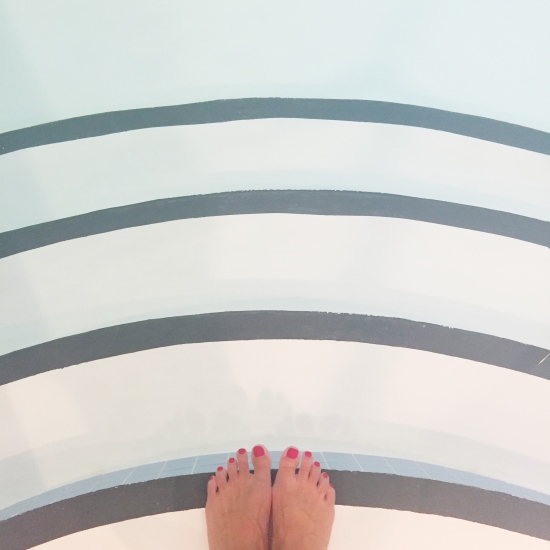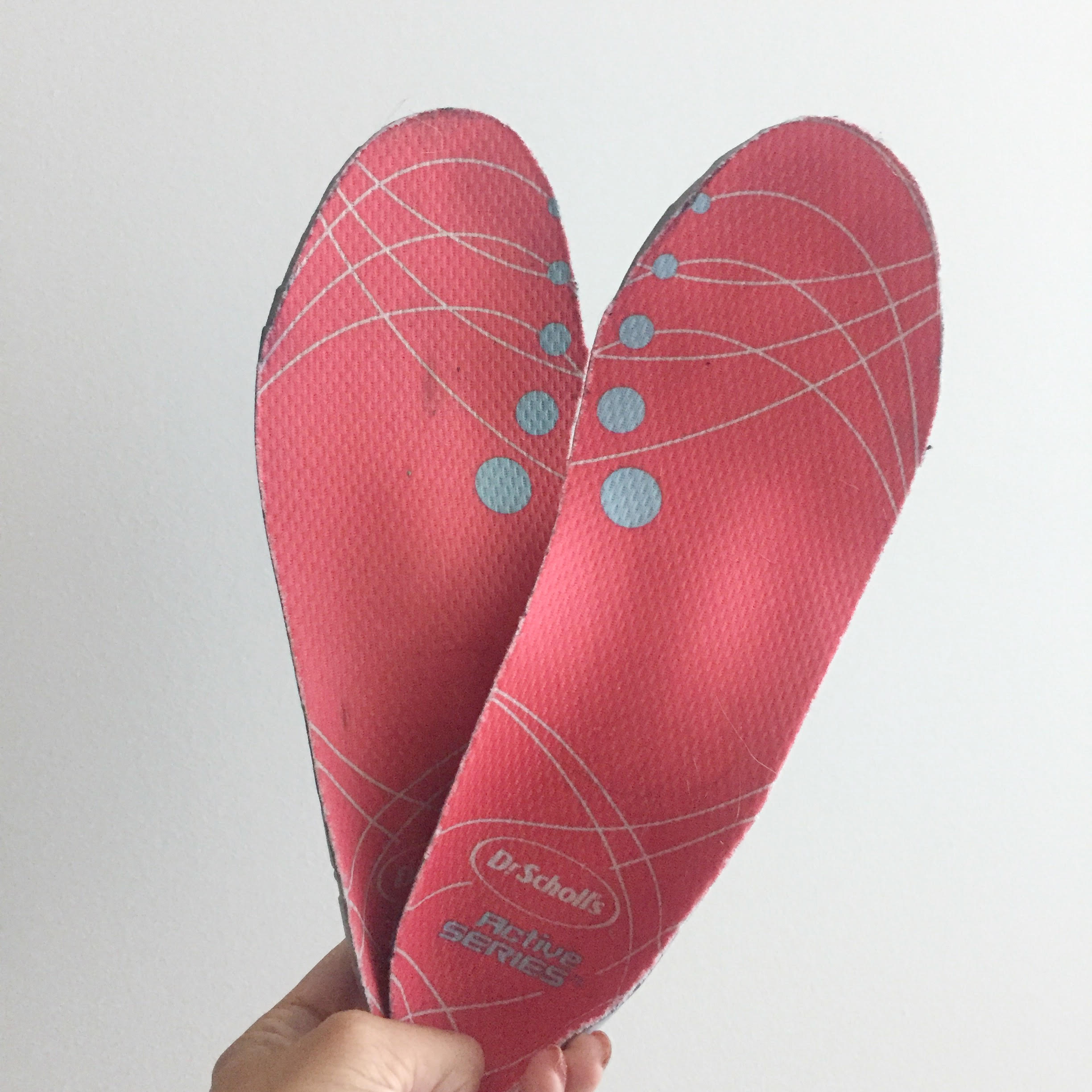
Maybe it’s because I’m a runner, and also a bit of a germaphobe, but I’m pretty sure I think about my feet and their health more than the average person: I stare at what might be slight bunions from wearing uncomfortable narrow-fitting heels too often; I reluctantly tiptoe barefooted across yoga studio floors and in change rooms, afraid of getting athlete’s foot or a nail fungus. While I’ve never had a fungus infection diagnosis, I know they are pretty common, and my feet have gone through a lot, including one black toenail (thanks to it getting bruised while running a half-marathon).
Our feet are a common area for injury. So you shouldn’t be ashamed of a foot ailment such as a fungal infection because chances are most of us have been there, done that. Toenail fungus infections in fact account for 50 percent of all nail problems. And 2.4 million Canadians suffer from this type of infection, also called onychomycosis. So how to be proactive and keep your feet in good condition?
Air out your footwear. Keep your feet clean and dry by making sure your shoes are dry; and you can prevent them from becoming moist breeding grounds for bacteria by taking out the liner inside your shoes and having your footwear air out near a heater.
Don’t let your feet remain in pools of your sweat. So this means regularly changing your socks (especially so if you’re doing a sport such as running or skiing) and sticking to a breathable material such as wool so that the sweat is kept away from your skin. Cotton, on the other hand, traps moisture and will help bacteria proliferate.
Keep your toenails clipped short and straight across. And while I don’t follow this rule (what can I say, I like pretty pedicured toes!), nailfungus.ca says it’s better to keep your toenails bare (so that your nails are exposed to air) rather than polished.
Practice safe walking. Toenail fungus can be transferred from person to person and even from one toenail to another, so it’s best to not walk barefoot at public pools, public showers and locker rooms. I always bring a pair of inexpensive flip flops when I know I’ll be getting ready at the gym.
Even if you follow all of these careful rules, though, it is possible that you will still get exposed to the dreaded f-word, but if you get a fungal infection, it doesn’t mean all hope is lost and that you have to hide your feet forever. The most frequently prescribed treatment is 10% efinaconazole—more commonly known as Jublia—and it’s been shown to be effective at managing the infection.
If you suspect you have a nail fungus infection, speak to your GP or dermatologist so you can get the right treatment and back on the healthy path.
(This article was in partnership with nailfungus.ca and developed with information obtained from the Toenail Fungus Information (TIP) program.)
December 30, 2016

Considering how much I put my feet through every day, I don’t pay them enough attention.
I run a few times a week, logging about 30k a week if I’m not in training for a marathon, many more kilometres if I am. Walking is my preferred method of getting around to wherever I need to go, and I live downtown so much of where I need to go for work or just for errands or seeing friends is usually within a 45-minute walk. While I’m often in flats because of all the walking I tend to do, I occasionally wear heels to events, which more often than not are incredibly uncomfortable after about a half-hour of standing (although I have a few pairs that I can walk in relatively comfortably for hours).
All of this to say that my feet go through a lot, and could use a little attention. The idea of “Soleistic Health” is just as important as taking care of my skin (and I make sure to slather on SPF daily) or my heart (which I get pumping with all that running) and yet I have neglected them. What’s Soleistic Health? Well, I can’t claim to have created the term. The folks at Dr. Scholl’s came up with it and it’s the concept that proper foot care can impact a person’s overall comfort of body and mind.
I’ve spent more than a few parties in shoes causing me so much pain I’ve had to gingerly make my way home (years ago I even walked barefoot on the sidewalk because the stilettos were that excruciating). Or I’ve been on runs during which I’ve gotten blisters or had on shoes that are too minimalist for my liking (I prefer more cushioning for my runners) causing me to be distracted. That discomfort becomes all you can focus on. Who’s been in the same situation? Runners, I know we’ve all experienced this (we don’t suffer black toenails and unattractive feet for nothing!).
Consider, too, that three out of four people develop foot problems as they age. And that the feet are such a complex part of our bodies: each foot consists of 26 small bones, 33 joints and more than 100 tendons, ligaments, muscles and nerves. Feet need to be tended to!
While I can usually wear just about any running shoe (I have run in all types of shoes with few issues), I decided to give the Dr. Scholl’s Active Series Replacement Insoles a try. What they promise sounded promising so I was intrigued: they help reduce shock; provide protection to the ball of the foot, arch and heel; help relieve pain from shin splints, runner’s knee and plantar fasciitis; and help reduce odour thanks to DryMAX technology.

So I pulled out the insoles that came with my runners, trimmed the Dr. Scholl’s insoles to size, and tested them out for a month.
I was skeptical of how much I’d benefit from them, but the Dr. Scholl’s insoles do make for a more comfortable run. With the Dr. Scholl’s insole I could immediately feel they offer more support for my arch, and overall just a greater sense of cushioning between my feet and the shoe with each step.
I can’t quantify how much impact they helped reduce, and I’ve never experienced common running issues such as shin splints, but as a runner who’s logged more than 10,000 kilometres since becoming a runner, I can say that for running and walking, it made for a more comfortable run. And that’s key to helping me make it through each run; reduced impact and greater comfort helps me focus on the task at hand, say, for example, putting my best effort into speed work.
Oh, and that DryMAX tech is a bonus, too. I sometimes run with no socks in the summer, which can lead to some less than fresh smelling running shoes. The DryMAX has helped with the stinky shoe issue, so thumbs up from that, too!
It’s not a complicated task–swapping out the insoles–but wearing the Dr. Scholl’s insoles helps me step up my game when it comes to my “Soleistic Health”, which until now has consisted of just the occasional pedicure (although let’s not downplay the importance of pretty pedicured feet!).
(sponsored)
October 27, 2016



